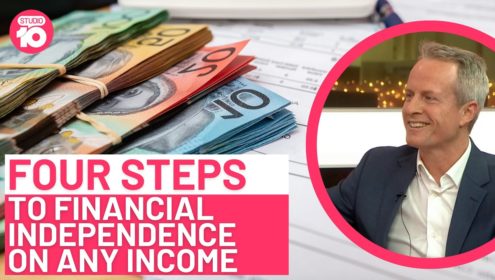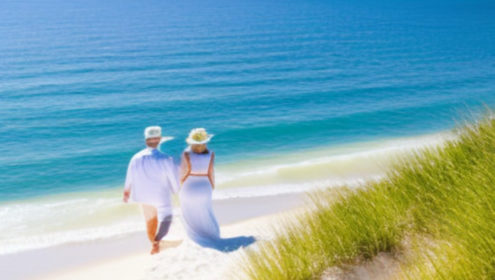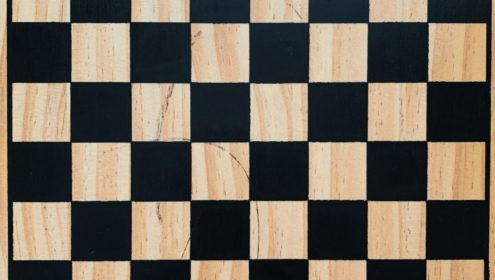Mission: Possible starts on the other side of the world, as far from the realm of personal finance as possible, or so it seems …
The ancient Rift Valley in Kenya lies at an altitude of about 2400 metres. This valley is home to the Kalenjin people and is one of the world’s most concentrated sources of elite athletes. The local school has a tradition of planting a tree for each ex-student who becomes an Olympic or World Champion – there is now a mini forest growing on the school grounds.
Many scientists, academics and athletes travel to this area to discover the secret behind this tribe’s remarkable success, and numerous articles, academic papers, books and documentaries have investigated the topic. Is it the altitude or the attitude? The fertile soil or the maize ugali eaten with most meals? Is it the Kalenjins’ biological make-up, culture, lifestyle or the fact that they grow up running to school, often in bare feet?
Many years ago, I had my own chance to train with these impressive athletes, when I attended the Kenyan national training camp near the high-altitude town of Iten. This opportunity came about because I had set myself a seemingly impossible challenge: on the day in 1993 when Sydney was announced as the host of the 2000 Olympic Games, I decided to see if it was possible for an average athlete (me) to compete at the Sydney Olympics. This meant training for seven years, while balancing university and the start of my career. A month before the opening ceremony, I entered the Olympic stadium for the 800 metres finals at the Olympic trials. While my Olympic dream ended minutes later, my experiment had taken me on an extraordinary adventure, all the way to the foothills of the Rift Valley.
I arrived in the evening at the training centre near Iten. It was in complete darkness. I wondered if being in the dark was part of their training regime. As it turned out, there was a blackout in the area, so we were taken to our rooms by candlelight. In the dim light, I saw that the sleeping conditions for these world-class athletes consisted of a basic bed in a small bare room (as well as cold showers, until the electricity came back on). The next morning, I woke at 5:45 am for the first session of the day. From then on, every day was the same: 6 am training, breakfast, rest, mid-morning training, lunch, rest, afternoon training, dinner, sleep and repeat. It was monotonous and unglamorous.
In my short time training with the Kalenjin runners, I came to realize there was no single factor or secret to their success. These athletes bring together a set of factors, each unremarkable on its own, which together produce exceptional outcomes.
Their training and lifestyle combined the key ‘S’ factors for success in sport: Strength, Speed, Stamina, Suppleness, Skill and pSychology. Any successful athlete will, knowingly or unknowingly, have the right balance for their particular sport. If an athlete doesn’t have these factors in balance, and focuses exclusively on one item, they will inevitably fall short in one way or another.
After years of persistent work, some of these athletes enter one of the most glamorous theatres in sport: the Olympic stadium. We, the public, see only their astonishing results, not the years of hard work that went into getting there. So, too, with financial independence; it doesn’t happen overnight, it’s the reward for a long period of taking sensible steps.
Like sports performance, financial independence has no single special secret. It is a matter of bringing together a set of factors, each one practical and workable, which produce a more exceptional outcome than we initially imagine. Over time, people can move from feeling overwhelmed and frustrated or struggling with their finances towards financial independence.
First, let’s clarify what is meant by financial independence. Many terms can describe financial wellbeing – wealthy, financially free and financial autonomy – to name a few. Ultimately, they all lead towards the same result: independence, which is the freedom to make decisions and live your life on your own terms. It’s the power to move away from an unhealthy job, relationship or lifestyle, and move towards new opportunities – whether this is another job, a side project, business, adventure, study, an initiative to help others or just plain better living. In Mission: Possible, I refer to this state as financial independence. In many ways, the term is not important; what is important is stepping onto a path that provides you with a foundation to live a better, fuller life.
Financial independence is not an absolute state, way off in the future, that you need to reach before your life really starts. It’s a journey that provides increasing degrees of freedom and choice. This journey is not about accumulating money for the sake of it, but about the choices that money can enable. In this regard, it doesn’t matter where you start, provided you are moving forward. For most of us, once we’ve taken a few steps in the right direction, financial independence begins with the lifting of our sense of confusion, frustration or despair. These first steps lead to a few more and, in time, we travel a greater distance than we imagined.
In sport, athletes combine the ‘S’ factors. For financial independence, the factors to combine are earning an income and saving, investing well over time, planning for property, covering risks and your mindset. You don’t have to excel in any single one to reach financial independence. In fact, you can be average at all of them. It’s working on the combination of items together that delivers results.
A side note
For those intrigued by the concentration of elite athletes in the Kalenjin region of the Rift Valley, the below image captures the birthplaces of 94 of the 100 fastest 10km runners of all time (the other six are spread between Morocco and North America). The biggest cluster of red dots is around the Kalenjin area of the Rift Valley. The other countries with red dots are, clockwise, starting to the left of Kenya, Uganda, South Sudan, Ethiopia, Eritrea, Somalia, and Tanzania. The source of the graphics is from a Reddit post from u/animbicile in January 2022 (more maps of different pursuits including Chess, Tennis, Golf, Table Tennis, Football, Ice Hockey, and Badminton can also be found).




